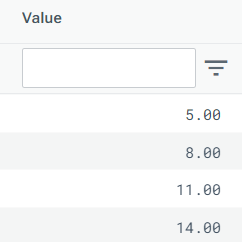Type | Read/write | Author | Availability |
Read | Finbourne | Provided with LUSID |
The Tools.Range provider enables you to write a Luminesce query that provides a simple range of values.
Note: The LUSID user running the query must have sufficient access control permissions to use this provider. This should automatically be the case if you are the domain owner.
You can use this provider in conjunction with other providers to generate a range of values for further querying, see example 3.
Basic usage
Query parameters
Tools.Range has parameters that enable you to filter or refine a query.
To list available parameters, their data types, default values, and an explanation for each, run the following query using a suitable tool:
Data fields
By default, Tools.Range returns a table of data populated with particular fields (columns). You can return just a subset of these fields if you wish.
To list fields available to return, their data types, whether fields are considered 'main', and an explanation for each, run the following query using a suitable tool:
Note: Fields marked 'primary key' are returned by queries that start
select ^ from Tools.[Range]...
Examples
Example 1: Generating a default range of values
The table of data returned by the query shows one column with values from 1 to 100.
Example 2: Generating a range of 4 values which start from 5 and increment by 3
The table of data returned by the query looks like this:

Example 3: Generating a range of dates to fetch LUSID logs from
In this example, Tools.Range is used to generate dates for the previous three days, which are then passed into the Lusid.Logs.AppRequest provider to fetch all GetValuation request logs for each day in this time range.
The table of data returned by the query looks like this:

